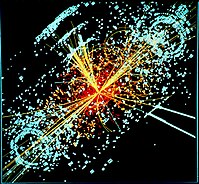
Photo from wikipedia
Cold season (December – February) 2‐m temperatures have a far‐reaching impact on critical infrastructure; medium or long‐term predictability would thus be an invaluable asset. However, a better understanding of the… Click to show full abstract
Cold season (December – February) 2‐m temperatures have a far‐reaching impact on critical infrastructure; medium or long‐term predictability would thus be an invaluable asset. However, a better understanding of the most prevalent underlying temperature patterns is needed before improvements in predictability are possible. Previous studies have shown that cluster analysis preprocessed with principal component analysis (PCA) can help identify the most prevalent spatial patterns within different atmospheric datasets. Additionally, nonlinear variability can be identified when coupling cluster analysis with PCA preprocessing based on the kernel matrix from support vector machines (known as KPCA). In this study, these methods were employed to create an updated 2‐m cold season temperature climatology.Temperatures were quantified using NCEP/NCAR global reanalysis data spanning 1948–2017. Kernel and rotated PCA combined with k‐means cluster analysis was tested against cluster analysis with no PCA preprocessing to identify the fields that best characterize the underlying climatological structures within the 2‐m temperature data. Four patterns emerged from the analysis. Two patterns were primarily constrained to years early in the study period that had a strong relationship with phasing in the North Atlantic Oscillation and the Arctic Oscillation. A third pattern revealed the anomalous warming along the West Coast that has been increasingly observed in recent years, while a fourth showed a broad anomalous warm region centered on the Midwest that expanded across most of the eastern two‐thirds of the nation. These final two patterns were weakly related to phasing within the Pacific North American teleconnection and phasing of the El Niño Southern Oscillation. Most years in the final two clusters occurred post 1990, demonstrating suggesting these anomalous warming patterns are becoming more prevalent in recent decades. These patterns can be used in future work to inform medium‐ and long‐term forecasting applications.
Journal Title: International Journal of Climatology
Year Published: 2020
Link to full text (if available)
Share on Social Media: Sign Up to like & get
recommendations!